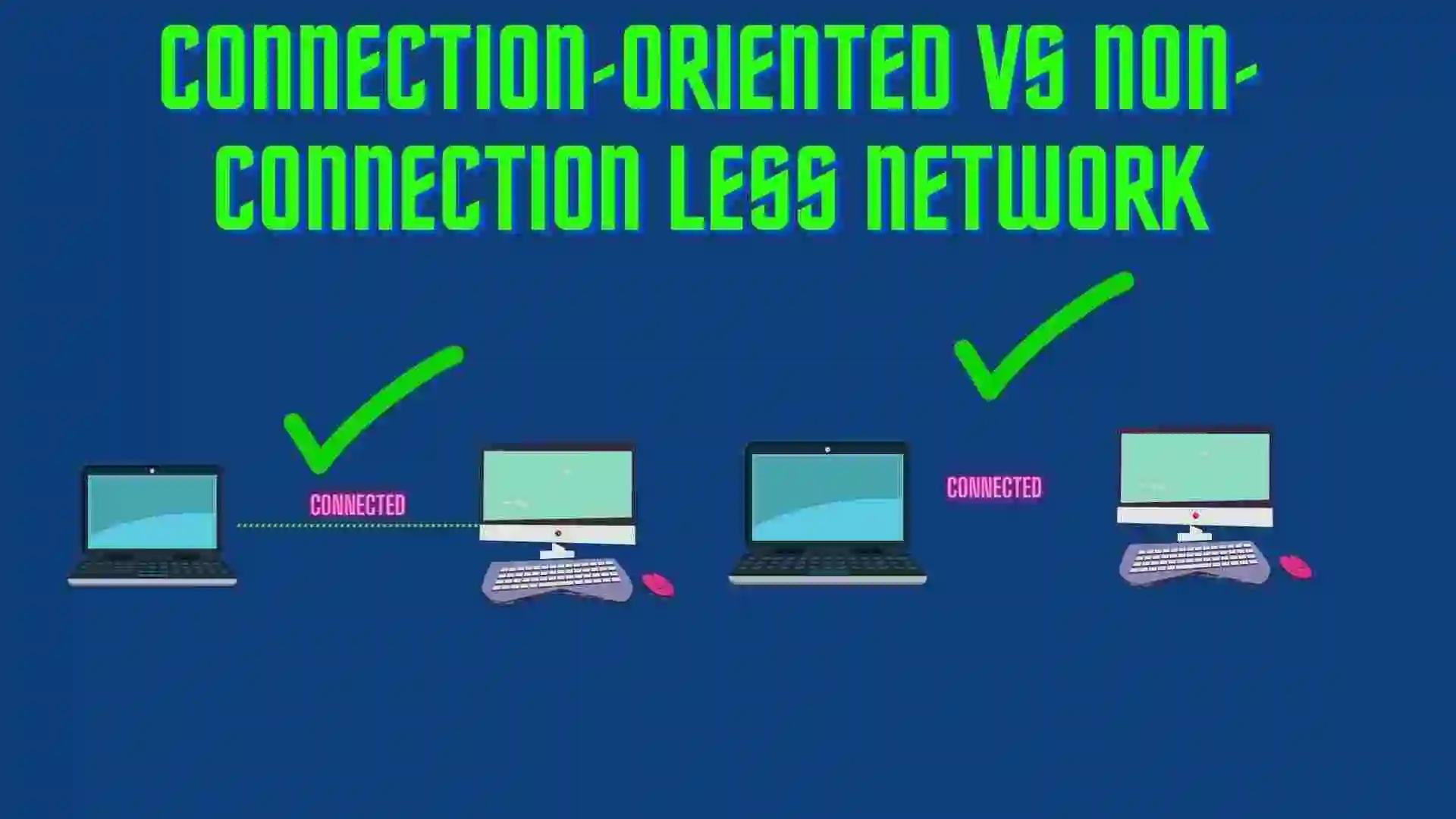In this blog, we will learn about the DHCP Protocol which is one of the important protocol in Computer Network . We will see why we use this protocol and what are the pros and cons of it. So let’s get started with the blogs.
Table of Contents
- Introduction DHCP Protocol
- How does DHCP Works
- Components of DHCP Protocol
- Advantages:
- Disadvantages:
- Recent Articles on Computer Networks
- Recent Articles on Linux
Introduction DHCP Protocol
DHCP, which stands for Dynamic Host Configuration Protocol, is a network protocol used to automatically assign IP addresses and other network configuration settings to devices on a network. It simplifies the process of managing and administering IP addresses in a network environment.
These setups are automated and centrally managed using DHCP. New devices don’t require manual IP address assignment. Therefore, connecting to a DHCP-based network does not require any user configuration.
Both small business networks and extensive enterprise networks can use DHCP. The majority of routers and networking hardware use DHCP by default. DHCP is often referred to as RFC 2131 (Request for comments).
How does DHCP Works
Here’s a basic overview of how DHCP works:
A) DHCP Discovery:
When a device (known as a DHCP client) connects to a network, it sends out a broadcast message called a DHCP discover packet, seeking a DHCP server.
B) DHCP Offer:
The DHCP server receives the discovery packet and responds with a DHCP offer packet. The offer contains an available IP address and other configuration parameters such as subnet mask, default gateway, DNS server addresses, and lease duration.
C) DHCP Request:
The client, upon receiving the offer, chooses one of the offered IP addresses and sends a DHCP request packet to the DHCP server, confirming its selection.
D) DHCP Acknowledgment:
The DHCP server receives the request packet and responds with a DHCP acknowledgment packet, confirming the assignment of the chosen IP address to the client. This packet also includes any additional configuration information.
E) IP Address Lease:
The client now has a lease on the IP address and can use it for communication on the network. The lease has a predetermined duration, after which the client must renew the lease or request a new IP address.
F) Lease Renewal:
During the lease period, the client may periodically contact the DHCP server to renew its lease on the assigned IP address. If the lease is successfully renewed, the client can continue using the IP address.
G) Lease Expiration:
If the client fails to renew the lease within the specified time, the IP address lease expires. The client must then go through the DHCP process again to obtain a new IP address.
Components of DHCP Protocol
The DHCP protocol consists of several key components that work together to facilitate IP address assignment and configuration. Here are the main components of DHCP:
A) DHCP Client:
The DHCP client is a device, such as a computer, smartphone, or network-enabled device, that is seeking network configuration information. It initiates the DHCP process by sending a DHCP discovery packet.
B) DHCP Server:
The DHCP server is responsible for allocating IP addresses and providing network configuration information to DHCP clients. It receives DHCP discovery packets, responds with DHCP offers, handles client requests, and assigns IP addresses.
C) DHCP Messages:
DHCP communication occurs through a series of messages exchanged between the client and server. The main message types include:
- DHCP Discover: The client broadcasts this message to locate available DHCP servers on the network.
- DHCP Offer: The server responds with this message, offering an available IP address and associated configuration parameters to the client.
- DHCP Request: The client selects an offered IP address and sends this message to request the allocation of that address.
- DHCP Acknowledgment: The server sends this message to confirm the allocation of the requested IP address to the client.
- DHCP Release: The client sends this message to release the allocated IP address before the lease expiration.
- DHCP Renewal: The client sends this message to request the renewal of an existing IP address lease.
- DHCP Decline: The client sends this message to indicate that an offered IP address is already in use on the network.
D) DHCP Lease:
When a DHCP server allocates an IP address to a client, it does so for a specific duration called the lease. The lease duration defines how long the client can use the assigned IP address. Before the lease expires, the client can request a lease renewal to continue using the IP address.
E) DHCP Relay Agent:
In some network architectures, a DHCP relay agent is employed to forward DHCP messages between clients and servers across different network segments or subnets. The relay agent listens for DHCP messages, encapsulates them, and forwards them to the appropriate DHCP server. This enables DHCP functionality to be extended across larger networks.
E) DHCP Database:
The DHCP server maintains a database that stores information about leased IP addresses, including the associated configuration parameters and lease duration. This database helps the server manage IP address assignments, track lease durations, and handle lease renewals and releases effectively.
These components work together to automate the process of IP address assignment and configuration, providing flexibility and scalability for network environments of varying sizes.
Advantages:
The DHCP (Dynamic Host Configuration Protocol) protocol offers several advantages in network environments. Here are some of the key benefits:
A) Simplified IP Address Management:
DHCP simplifies the management of IP addresses within a network. Instead of manually assigning IP addresses to each device, DHCP automates the process by dynamically allocating and managing IP addresses. This eliminates the need for administrators to track and assign IP addresses manually, saving time and reducing the likelihood of errors.
B) Efficient Resource Utilization:
DHCP optimizes the use of available IP addresses. It assigns IP addresses on-demand, dynamically allocating them to devices as they connect to the network. This ensures that IP addresses are only assigned when needed and are released when devices disconnect or leases expire. By avoiding address conflicts and efficiently reusing addresses, DHCP helps to maximize the utilization of IP address resources.
C) Centralized Configuration Management:
With DHCP, network configuration settings can be centrally managed and updated on the DHCP server. This includes parameters such as subnet masks, default gateways, DNS server addresses, and other configuration options. Administrators can make changes to the DHCP server’s configuration, and the updated settings are automatically propagated to the DHCP clients upon lease renewal. This centralized management simplifies the task of maintaining consistent network configurations.
D) Rapid Deployment of New Devices:
DHCP facilitates the rapid deployment of new devices on a network. When a new device connects to the network, it can automatically obtain an IP address and necessary configuration parameters from the DHCP server. This eliminates the need for manual configuration on each device and accelerates the onboarding process for new equipment or devices.
E) Flexibility in Network Changes:
DHCP provides flexibility when making changes to the network infrastructure. For example, if the IP addressing scheme needs to be modified or if a new subnet is added, the DHCP server can be reconfigured accordingly. DHCP clients will automatically obtain updated configuration information during the lease renewal process, minimizing the impact on end devices and reducing the administrative overhead associated with network changes.
F) Reduced Configuration Errors: By automating the IP address assignment process, DHCP helps to minimize configuration errors that can occur when manually configuring IP addresses on individual devices. It reduces the risk of address conflicts, subnetting mistakes, and other human errors, leading to improved network reliability and stability.
Overall, DHCP streamlines the management of IP addresses and network configurations, improves efficiency, and simplifies the deployment and administration of network devices, making it an essential protocol in modern network environments.
Disadvantages:
While DHCP (Dynamic Host Configuration Protocol) offers numerous advantages, there are a few potential disadvantages to consider:
A) Single Point of Failure:
When a network relies heavily on DHCP, the DHCP server becomes a single point of failure. If the server fails or experiences a significant issue, devices may lose connectivity or struggle to connect to the network. It’s important to have redundancy measures in place, such as backup DHCP servers or DHCP failover configurations, to mitigate this risk.
B) Lack of Control over IP Address Assignment:
DHCP dynamically assigns IP addresses to devices based on availability and configuration parameters set on the server. This lack of control may be undesirable in certain scenarios where specific IP address assignments are required, such as for servers or devices with specific network requirements. Static IP addressing may be more suitable in such cases.
C) IP Address Conflicts:
Although DHCP is designed to avoid IP address conflicts, there is still a possibility of conflicts arising. If two devices are assigned the same IP address due to misconfiguration or other factors, it can lead to connectivity issues and disruptions on the network. Proper network monitoring and conflict detection mechanisms can help mitigate this risk.
D) Lease Management:
DHCP leases have a duration or expiration time. When a lease expires, the DHCP client needs to renew the lease to continue using the same IP address. If a client fails to renew in a timely manner or is disconnected from the network during the renewal process, it may lose its IP address and need to go through the DHCP process again. This can result in temporary network disruptions or delays in regaining connectivity.
Recent Articles on Computer Networks
- Introduction to Computer Networking | What is Computer Network
- What are Topology & Types of Topology in Computer Network
- What is FootPrinting in Cyber Security and its Types, Purpose
- Introduction to Cloud Computing | What is Cloud Computing
- Distributed Shared Memory and its advantages and Disadvantages
- What is VPN? How doe VPN Work? What VPN should I use?
- What is an Internet and How the Internet Works
- What is a Website and How Does a Website or web work?
- Introduction to Virus and different types of Viruses in Computer
- What is TCP and its Types and What is TCP three-way Handshake
- What is UDP Protocol? How does it work and what are its advantages?
- What is an IP and its Functions, What is IPv4 and IPv6 Address
- What is MAC Address and its Types and Difference MAC vs IP
- What is ARP and its Types? How Does it Work and ARP Format
- Sessions and Cookies and the Difference Between Them
- What is ICMP Protocol and its Message Format?
- What is Big Data? Characteristics and Types of Big Data
- Disciplines of CyberSecurity | What are the goals of CyberSecurity?
- What is Firewall, Features, Types and How does the Firewall Work?
- Network Scanning, Types, and Stealth Scan in Computer Network
- Cryptography and its Types in Ethical Hacking
- Tor Browser and How does it Work | Onion Router Tutorial
- Proxy Server, Advantages, Difference between Proxy Server & VPN
Recent Articles on Linux
- What is Linux Operating System | Introduction to Linux
- Directory in Linux Define | Linux Directory & its Commands
- Explain the chmod command in Linux | Linux chmod command
- Linux User Management || User Management in Linux
- Linux Computer Network Advanced Command | Network Command
- Redirection in Linux I/O| Linux I/O Redirection
- CronTab and Job Scheduling in Linux | Make CronTab Project
- Linux Firewall Unlock Rules with Firewall-cmd Tutorial
- netstat command in Linux | Linux netstat command
- SSH Command Full Guide with Practical | Linux SSH Service




